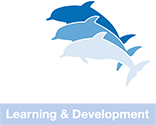
How to Maximise The Impact Of Your Leadership Development Training On A Limited Budget
Some people have a ‘natural propensity’ for leadership, and in others, leadership skills come only with hard earned training and experience. For all leaders, however, leadership is an ongoing journey, not a static or one-off process. To remain relevant and adaptable to emerging challenges, all leaders require development training opportunities.
The reality, however, is that leadership development programmes are often constrained by cost, and they can be challenging to deliver on a limited budget. So, how do you make every investment count whilst still giving your leaders the training and opportunities they need to drive long-term value and growth in your business, regardless of budget size? Read on to find out more:
The Value Of Leadership Training For All Organisations
Developing leaders at every level of your organisation is essential for sustaining progress, adapting to market changes and new technologies, and for nurturing a positive workplace culture. Leadership development training enhances the ability of managers, team leaders, and senior directors alike to steer teams and shape outcomes in line with organisational goals. However, fundamental questions remain, such as how much does leadership training cost, and where can organisations derive the greatest value from their spend? Costs for training vary widely depending on the delivery format and scale required, as well as your choice between internal and external facilitators. The key to making the most of your budget is to align each investment in leadership training with your strategic priorities.
How To Maximise Impact On A Limited Budget
If your budget is limited, it is essential to clarify which areas of leadership development are most urgent, make smart use of your resources, and, when necessary, use innovative delivery methods to maximise impact and control costs.
1. Focus on your priority audiences: Constrained budgets call for a targeted approach, so start by identifying high potential talent and current leaders/managers whose growth will most influence your organisational outcomes. You’re looking to apply pressure at a strategic point here – in order to instigate a cascade or domino effect – rather than adopting a scattergun approach to training. Focusing your programmes on these key groups first will magnify the effect of your training budget and accelerate improvements throughout your wider organisation. You might want to undertake a needs analysis first to pinpoint where leadership gaps currently exist, then channel your investment towards these areas for maximum effect.
2. Embrace modular and blended learning modalities: Traditional off-site, days-long classroom style workshops are often expensive and may not always be cost-effective and sustainable within a limited budget. Instead of taking talent away from their jobs and families for days on end, try a more flexible approach to learning to see if it works for your team. Modular or blended learning, combining digital and face to face elements, can facilitate deeper learning and better application on the job, especially when delivered in digestible segments over time. For example, some organisations use self-paced e-learning modules and virtual training for core concepts, which are complemented by in-person workshops for more experiential and discussion-based integration.
3. Make full use of internal expertise: All organisations have an untapped well of practical insights and knowledge that can be deployed within their training programmes. With the right support, such as the Train the Trainer model, experienced and influential individuals in your team can be developed to deliver relatable and relevant sessions routed in your organisational culture and context, at a fraction of the cost of external provision. We recommend investing in developing a core team of internal champions and training advocates, giving them access to trusted support frameworks and ongoing development opportunities. Over time, this will strengthen your knowledge sharing capabilities and build informal training capabilities from within.
4. Experiential and peer led learning: Practical approaches to leadership development, such as problem-solving activities, business simulations, and peer mentoring, can deliver a strong impact while costing less than some traditional training modalities. These methods encourage greater critical thinking, collaboration, teamwork, and real-world skill application than classroom-based or online training alone. Outside of your formal L&D programme, ongoing mentoring networks and cross team projects are another good way of stretching your leadership capabilities, drawing on the expertise already present within your business.
What Next?
At GRA, we deliver a range of management and leadership development training programmes with a demonstrable ROI for businesses of all sizes. To find out more or to discuss your training objectives, please contact one of our team today by clicking here.
Image source: Canva



